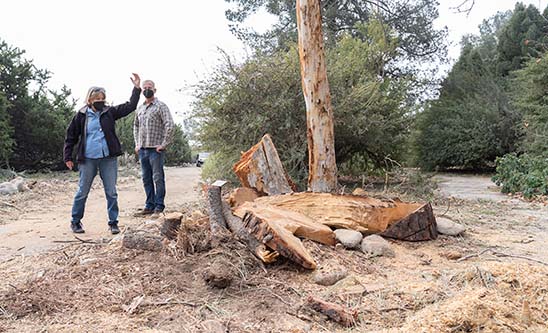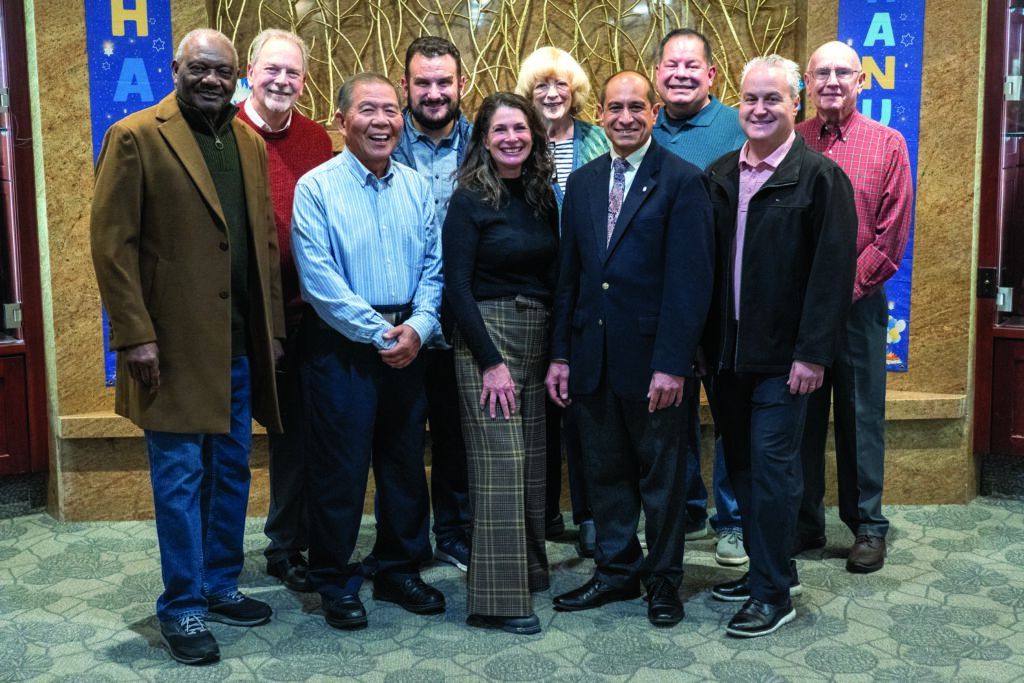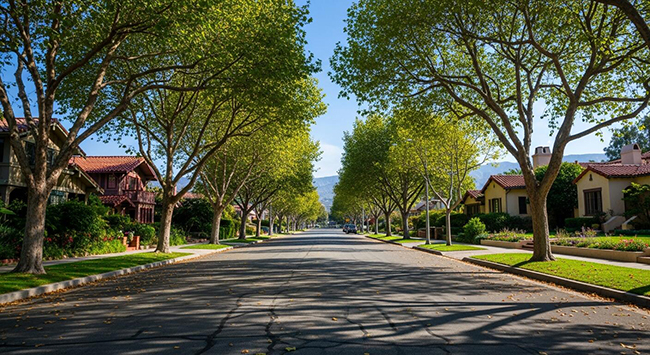California Botanic Garden still feels storm’s impact —podcast

by Andrew Alonzo | aalonzo@claremont-courier.com
Over the past few days, California Botanic Garden maintenance workers, officials and field botany technicians have traversed the garden’s narrow pathways in service carts, hauling debris as they cleaned up the mess left behind by the recent Santa Ana windstorm. What was once a lush, green scene of native California plants is now acres of downed trees, flattened shrubbery, and branches, much like the rest of Claremont.
Eleven days after the initial windstorm, the garden’s parking lot was filled with leaves, branches, and tree trunks piled high by garden crews. While the garden’s clean-up efforts were underway, the full extent of the windstorm’s damage was far more extensive than imagined.
“We probably have somewhere around 75-plus trees completely down on the ground. And then of course, any shrubs that were underneath them are smashed and crushed,” the garden’s Director of Horticulture Peter Evans said. “Some of the roads were totally impassable and so the first thing we had to do was cut the trees to open up the roads because we couldn’t even get into the back garden [area].”
The garden’s Executive Director Lucinda McDade said it may take weeks, if not months, before a full damage report detailing what exactly was lost will be completed. McDade mentioned that total cost of the garden’s damages seems to be hovering close to $150,000.
While the damage is already done, the storm’s impact opens the door for potential research, specifically, how Santa Ana winds affect Claremont and California plant life, according to McDade.
Three massive 70-foot Torrey pine trees that once towered over the garden toppled in the high winds, making it difficult for maintenance crews to navigate the garden terrain.
The garden’s arborists, Chuck’s Tree Service, worked on whittling down an island oak, quercus tomentella, with extreme caution to avoid disturbing the bee hive buzzing nearby. Near the garden’s administrative building, which has a broken window on the second floor thanks to a fallen palm tree, crews worked tirelessly to clear the palm fronds that blocked the north entrance of the building. Everywhere, workers were cleaning up the damage.
McDade shared that the garden crews, obviously sad about the destruction, are doing all they can to save downed trees with roots still intact, within reason. The unsalvageable garden life will either be replaced with a like-for-like swap if possible, or replaced with a new species native to the area that specific gardening area represents.
Thankfully, no one was present on the garden’s grounds during the January 21 overnight windstorm, according to McDade. In addition, none of the animals which frequent the garden, including bees, squirrels, coyotes, bobcats, and birds have been badly affected. In fact, they seem to be adapting to the new, temporary layout of the garden, and Evans shared that crews have spotted a few regulars since the storm.
Early in the morning the day after the windstorm, McDade returned to the garden to assess the damage. “My first concern was for the seed bank. I was really focused on the seed bank because we really needed to get the power on to the seed bank. The seeds are in large conventional freezers, they’re zero-degree Fahrenheit freezers and they need to stay pretty cold or else they’re going to warm up too much and the seeds will die,” McDade said. “But as I was walking out here to let the maintenance guys in who were going to help me get the [seed bank] generator on, I realized how bad it was … I could easily see that all of our outdoor areas … I could see those areas were really bad. It was all just very, very heartbreaking.”
But being in the gardening business, McDade said it’ll only be matter of time before [the plants] bounce back. “We’re gardeners,” she said. “It’s what we do.”
Fortunately, the seed bank was virtually untouched by the wind, apart from a few missing rooftop tiles.
Field botany technicians for the garden, Amy Tims and Andrew Castro, both shared that clean-up efforts over the last weeks have been tough and trying.
“I think especially with climate change, our storms have been getting worse and worse so it kind of puts things into perspective about the severity, and how we need to be conversing our environment more,” Tims shared.
“We’re looking at a partial reopen. We’ll probably consider that if we can reopen the front 35 acres, which is basically Indian Hill mesa over there … and the Southern California gardens,” McDade said as she pointed to the railing leading up to the garden’s administrative building. “If we can get all of this ‘safe safe,’ then we’ll be able to open up this part of the garden.” She gave a rough estimate of about three weeks for a partial reopening, if all goes well.
While clean-up efforts are still at the forefront of the garden’s crews’ minds, as far as all the wood piling up in the front parking lot, the garden’s Executive Assistant Mary Rose “Ming” Posa said she is already working with outside help to remove it.
“The larger pieces that can be made into planks are going to go to the Pomona Fairplex for a project that L.A. County Fire has,” Posa said. “And some of the smaller pieces, we’ve been connecting with local woodworkers and people who do crafts to try and salvage them as much as possible.”
McDade added that there will be some wood that people don’t want, which the garden might use as firewood.
With about $150,000 in damage costs, the garden hopes residents can help by donating online at https://www.calbg.org, or just by becoming members who will frequent the garden once it reopens. The garden is not accepting any outside clean-up help at the moment as they don’t want residents potentially getting hurt at the garden.
“We need people’s help to try and recover from this,” Posa said. “It’s important for people to know the garden is here and they shouldn’t take it for granted, I think. We’ll keep it going as far as we can but it’s like we do … want people to support what we do.”
“From one day to the next, it can change pretty dramatically,” McDade said. Indeed.











0 Comments